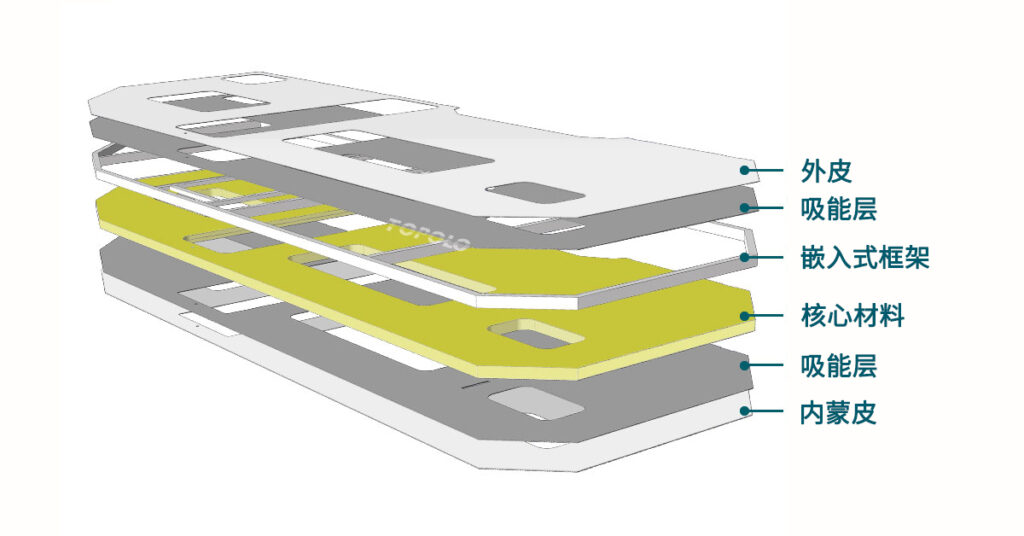
玻璃纤维 (FRP/GRP) 复合板作为一种用于大篷车的新型材料,越来越受到制造商和用户的欢迎。它取代了金属和木材,大大提高了大篷车的性能。随着市场接受度的提高,许多房车车身也采用这种材料制造,例如房车、探险卡车、C 级房车、卡车露营车、泪滴房车等。
特谱勒作为中国领先的玻璃纤维夹芯板制造商,我们的产品享誉全球,并畅销欧洲、北美、南美、中东等地区。
产品特点
- 保温
- 耐用
- 轻
- 防水防霉
- 易于清洁和维护
规格
| 皮肤 | 胶衣 FRP/GRP 板材。(厚度:0.7-5.0mm) |
| 表面处理 | 光面、哑光、压花、防滑等 |
| 核心 | XPS(挤出聚苯乙烯)泡沫。(密度:35-50kg/m³)。 PET(聚对苯二甲酸乙二醇酯)泡沫。(密度:60-300kg/m³。 PU(聚氨酯)泡沫。(密度:28-50kg/m³)。 PVC(聚氯乙烯)泡沫。(密度:40-250kg/m³)。 |
| 复合法 | 不饱和聚酯胶粘剂 |
| 厚度 | 10-150mm. |
| 长度 | ≤12000mm. |
| 宽度 | ≤3200mm. |
| 其他层 | 胶合板、吸能层等 |
| 框架材料 | 木材、玻璃纤维型材、铝型材、钣金等。 |
| 胶合板、吸能层等 | -40℃ 至 +80℃ |
一体式房车复合板
许多用于大篷车的玻璃纤维复合板存在翘曲和分层等问题,这是因为在面板复合过程中,芯材和表皮没有完全结合。我们的夹芯板是在高压真空环境中复合而成,胶水均匀分布在芯材和表皮之间。我们的大型作平台可以制作更大、更平坦的面板,最大宽度为 3.2m,最大长度为 12m,因此房车车身的每一侧都由一块复合板组成。整个房车车身由前面板、后面板、左面板、右面板、车顶板、地板和几个隔板组成,使组装工作变得简单。





玻璃纤维饰面
使用玻璃纤维板代替铝或木材作为 RV 壁板是追求极致性能的突破和创新。它结合了许多因素,例如轻便、防水、绝缘、保温、耐用性和美观性。它使房车建造更快、更高效,并为用户带来更舒适的房车内部环境和更低的维护成本。玻璃纤维板的表面涂有胶衣,绝对防水。通常可以加工成光面、哑光、浮雕等多种色彩效果。

芯材
从绝缘、强度、重量、成本等方面来看,不同类型的房车夹芯板芯材选择不同。常用的芯材是硬质泡沫、蜂窝板和胶合板。例如,需要绝缘的面板将使用泡沫作为芯材;要求重量更轻的房车车身通常选择蜂窝板作为芯材;并且使用胶合板作为芯材可以增加面板的强度,大大降低施工成本。
如何增强 RV 夹芯板的强度
仅依赖玻璃纤维板和芯材的夹芯板结构无法提供更强的强度支撑。这在泡沫芯玻璃纤维夹芯板中更为明显。拥有更坚固的面板意味着添加更坚固的材料。通常我们会为夹芯板做一个“骨架”,嵌入泡沫芯中。这些材料通常是防水木材、高密度泡沫、铝型材、玻璃纤维型材等。还有一点是,我们将在芯材和表皮之间增加一层吸能材料,这不仅增加了面板的强度,还提高了表面的光滑度。


CNC加工
复合板制造完成后,需要进行后处理,以获得设计的形状、更准确的尺寸和更好的外观。CNC加工可以更好地完成切割、钉钉、铣削、钻孔等作,并保持精度的一致性。

有关 RV 复合板的更多信息,请咨询我们。





